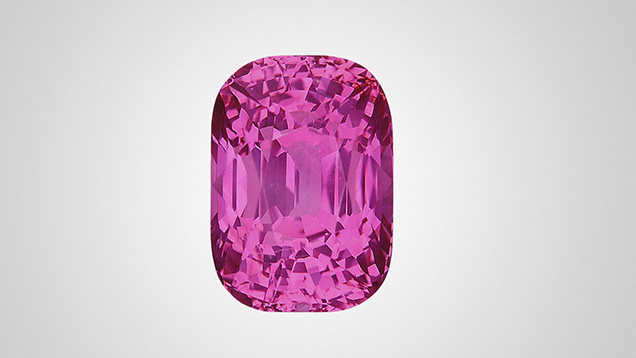Pink Mozambique Sapphire

Recently, GIA’s Carlsbad lab received an 11.16 ct pink sapphire (figure 1) for a colored stone identification and origin report. Standard gemological testing was consistent with sapphire, giving a refractive index of 1.759–1.769 and a hydrostatic specific gravity of 4.00.

The sapphire contained various inclusions (figure 2) such as negative crystals and transparent colorless crystals. These inclusions showed no indication of thermal alteration, suggesting the stone was unheated. Bands of silk arranged in a hexagonal formation with irregularly shaped thin films intermixed with particle clouds could be seen throughout the stone. This suite of inclusions was consistent with a Mozambique origin.
Advanced testing confirmed that the sapphire was unheated and from Mozambique. Infrared spectroscopy produced a spectrum consistent with unheated sapphire. The spectra showed a single peak at 3309 cm–1 with no secondary peak at 3232 cm–1 (Summer 2019 Gem News International, pp. 290–291). Laser ablation–inductively coupled plasma–mass spectrometry (LA-ICP-MS) confirmed the stone’s chemical composition of a higher iron and lower vanadium content, which is typical of Mozambique sapphires.
Mozambique is known for rubies that are saturated in color. With its 11.16 ct size and pure pink hue, this unheated Mozambique sapphire was a unique encounter.



